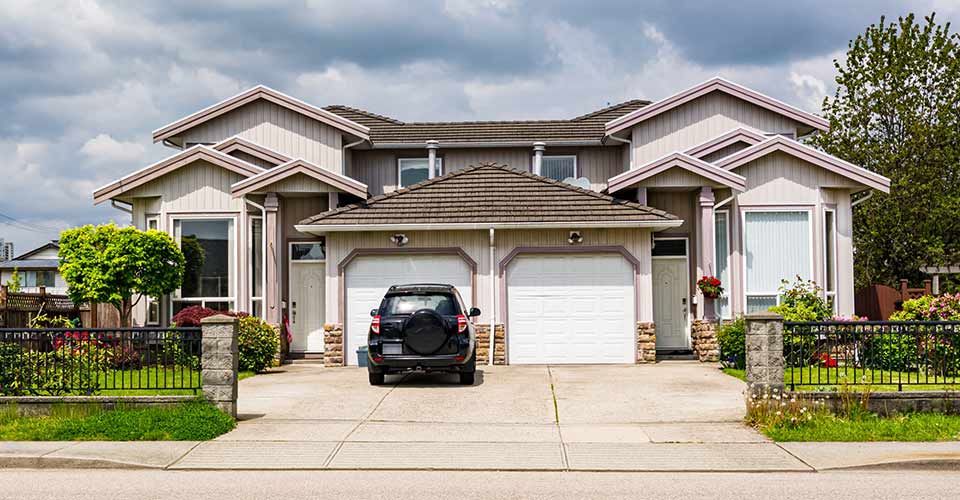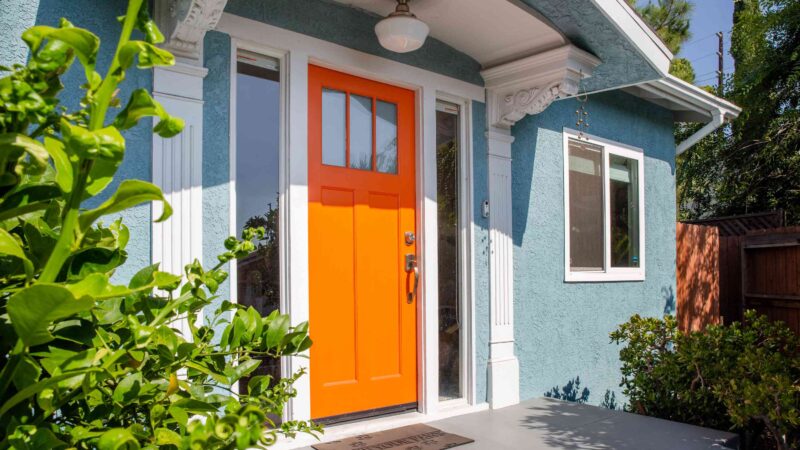How Much Does It Cost To Build a Duplex?

Let’s talk about building a duplex, like having two homes in one building. It’s a great way to have a home for yourself and make some extra money by renting out the other part. But building a duplex is different from a regular house, and it can cost a bit more. So, we’re here to help you understand how much it might cost to build a duplex.
Duplexes are special because they give you some independence, like a regular house, but they also need a bit more looking after, just like big apartment buildings. Even though a lot of people like duplexes, they aren’t always easy to find in some places. This means there are not many duplexes available for sale or rent in some cities.
But the good news is that a lot of people want to rent duplexes, and the rental market is growing. That means there’s a demand for new duplexes. Some smart folks are thinking about building their own instead of buying an existing one.
If you’re wondering, “How much does it cost to build a duplex?” don’t worry. We’re here to guide you through it and provide insights into the expenses involved in constructing a duplex. So, let’s dive in and learn more about building a duplex.
What is a duplex home?
A duplex is a special kind of house. It’s like having two homes connected in one building. Think of it as a mix between a single-family house and a townhome. In the U.S., there are more than 2.18 million duplexes as of 2023.
People build duplexes for different reasons. Some developers or investors build them to earn more money by renting out two units in one building. Other times, regular folks like you and me might want to live in one part of the duplex and rent out the other to help with the bills. It’s also a good choice if you have different generations living under one roof but still want your own space.
Many duplexes have two floors and a wall in the middle. Each unit has its own door, and they are usually next to each other. But sometimes, one unit is on the bottom, and the other is on the top. They call these “one-up, one-down” duplexes.
How much does it cost to build a duplex?
Duplexes are often a more affordable option than single-family homes. On a national level, building a new duplex usually costs between $285,000 and $537,000, according to Fixr. In comparison, constructing a new single-family home is typically pricier, ranging from $390,000 to $710,000.
The cost of building a duplex can change depending on different things, like where you are, the materials you choose, how big the duplex is, and how much labour is needed. As a rough estimate, expect to spend around $130 for each square foot when building a duplex with average features, as suggested by Fixr. Keep in mind, if you’re thinking of a side-by-side duplex, it might be a bit more expensive to build than a one-up, one-down design. That’s because side-by-side duplexes have more space and a larger roof, which can increase the overall cost.
Let’s take a look at some particular expenses that you need to think about when constructing a fresh duplex:
Engineering: Hiring a structural engineer can cost you anywhere from $100 to $200 per hour. They’ll help ensure your duplex is built safely, according to Angi.
Contractor: Your contractor will usually charge you for the whole project. The fees typically range from 10 per cent to 20 per cent of your total budget, as reported by Angi.
Foundation: The cost of the foundation can vary a lot, mainly depending on the size of your duplex and the materials used. Popular foundation options and their costs per square foot include a monolithic concrete slab at $5 to $14, a stem wall concrete slab at $5 to $6, and a pier and beam foundation at $7 to $11, as per HomeGuide.
Framing: Framing is a critical part of building, as it creates the structure for your walls and roof. The hardware for framing is about $4 per square foot, while labour and lumber can range from $9 to $21 per square foot, depending on the type of wood you use, says Thumbtack.
HVAC: If you want to have central heating and cooling in your duplex, you’ll need separate systems for each unit. The average cost for a complete HVAC system is around $7,500, according to Angi.
Flooring: The cost of new flooring can vary, but for a 2,200-square-foot house, it’s usually between $15,400 to $82,300, according to Angi. But remember, the price can change depending on the type of flooring you choose. Carpet and linoleum are usually more budget-friendly, while hardwood tends to be the most expensive.
Electrical: Like HVAC systems, electrical costs can be higher for a duplex because you’ll need separate systems for each unit. The cost for new construction is around $4 to $7 per square foot, as reported by Fixr. Also, electrical outlets can cost you between $85 to $275 each, and switches are about $75 to $275 each.
Plumbing: For this important step, you can expect to pay a plumber between $75 and $150 per hour, as mentioned by Fixr. They’ll make sure your plumbing is in good shape in your duplex.
Other costs to keep in mind
In addition to the costs of materials and labour for building a duplex, there are other expenses you need to think about.
These are important to include in your budget:
Land: When you’re building a new duplex, you’ll have to buy the land it will be on. This might also involve extra costs like loan fees and interest if you’re getting a loan to purchase the land.
Permits: As you go through the construction process, you’ll need different permits for each step. The types and costs of these permits can vary depending on where you’re building.
Demolition: If you’re buying a property that has a building on it and you need to tear it down to make room for the duplex, you’ll have costs for tearing down the old structure and clearing the land.
Design: Don’t forget to set aside money for finishing and decorating the duplex once it’s built. This includes things like painting and getting fixtures for lighting, kitchens, and bathrooms, which can add to your expenses.
Double the Costs: Because a duplex has two separate living spaces, you’ll need two of many things, like kitchen appliances, front doors, water heaters, and more. Make sure your budget can handle these doubled expenses.
Pros and Cons of Duplex Ownership
When you’re thinking about owning a duplex, it’s important to understand both the advantages and disadvantages. This way, you can make an informed decision before building a duplex:
Advantages of Duplex Ownership:
- Rental Income: Duplexes allow you to earn rental income from one or both units, making them attractive to investors.
- Live and Rent: You can choose to live in one unit while renting out the other. Depending on the local rental market, this rental income might cover your mortgage, essentially allowing you to live rent-free.
- Tax Benefits: As a landlord, you can enjoy tax deductions, either on the entire property or half of it.
- Financing Ease: Duplexes are often easier to finance, especially if you plan to live in one of the units. You might even qualify for an FHA loan, which requires a low down payment.
- Tenant Appeal: In certain areas, renters prefer duplexes over traditional apartments, allowing you to charge higher rents and attract better tenants.
- Reduced Vacancy Risk: With two units, the risk of both being vacant at the same time is lower, especially if you stagger lease dates.
- Appreciation: Well-maintained duplexes typically experience steady increases in value.
- Flexibility: Duplexes offer flexibility in living arrangements. You can live in one unit for a while, rent out both, move back in later, offer one unit to a family, or explore short-term rentals.
Disadvantages of Duplex Ownership:
- Limited Tenant Appeal: Duplexes may be less attractive to renters compared to single-family homes, potentially resulting in lower rental income and a smaller pool of tenants.
- Zoning Restrictions: Not all areas are zoned for duplexes, which can limit your location choices.
- Shared Walls: If you live in one of the units, you’ll share a wall with tenants, making you easily accessible to them.
- Maintenance Costs: When significant repairs are needed, you might face a considerable maintenance bill, affecting both residences at the same time.
- Resale Challenges: While you might be comfortable being a landlord now, finding a buyer interested in being a landlord when you decide to sell may be more challenging.
It’s crucial to carefully consider these factors to determine whether duplex ownership aligns with your financial goals and lifestyle preferences.
Cost to Convert a Single-Family Home Into a Duplex
Some homeowners or investors might think about turning a single-family home into a duplex. They do this for different reasons, like providing a space for family members or creating rental income. But this isn’t always possible.
First, you need to check the local rules (zoning laws) to see if your property can be turned into a multi-family home. Then, you’ll need to see if the property’s layout can be divided, either horizontally or vertically.
Changing the property usually means moving plumbing and electricity, building new walls, and adding new ways to get in and out.
On average, the cost to turn a single-family home into a duplex is about $80,000 to $100,000. It’s essential to consider all of this before making a decision.
Recommendation
Blueprint Homes – Best Builders in Perth, Australia
How to Buy Sustainable Furniture – Complete Guide
What Is Industrial Architecture?
What Is Vernacular Architecture? – Types Of Vernacular Architecture
Conclusion
In conclusion, building a duplex offers financial opportunities and lifestyle benefits, but it necessitates thorough planning and cost considerations. Whether you are embarking on a new construction project or converting an existing single-family home, being aware of the expenses and potential challenges is crucial for making an informed decision. If you’re inquiring about the cost of building a duplex, this guide is here to help you navigate the intricacies and budgetary aspects of the process.
FAQs
Q: What’s the cheapest duplex to build?
A: Typically, duplexes with one unit over another are the most budget-friendly to construct. This is because they involve smaller foundations and roofs, which are among the most significant construction expenses. Additionally, builders might consolidate certain piping and wiring, resulting in cost savings for plumbing and electrical work.
Q: How much does it cost to build a four-bedroom duplex?
A: Hence, the overall expenditure for building a 4-bedroom duplex, covering everything from the foundation to the roofing stage, should fall within the bracket of ₦14,201,484 to ₦16,331,706. It’s important to keep in mind that various professionals and contractors may have their own fee structures, which could lead to variations from the figures provided here.
Q: Is Building a duplex profitable?
A: Duplex ventures offer the chance for substantial financial gains. However, assessing the viability of a duplex as a worthwhile investment relies on various factors and meticulous financial analysis, taking into account hidden expenses.
Q: Which Is Cheaper to Build: A Duplex or Two Homes?
A: Due to the shared lot, foundation, and shared roof, constructing a duplex is typically more economical than building two separate houses. On average, building a duplex can cost approximately 37% less than constructing two individual homes. It’s important to note that this estimate does not include land costs. When acquiring two separate lots, the expenses for land can potentially double for two single-family homes, depending on the required size for the duplex.
Q: How Much Do You Have to Put Down to Build a Duplex?
A: Contractors vary in their requirements, but when it comes to entirely new construction, a 10% down payment is commonly considered standard. If a builder requests a down payment exceeding 25%, it could raise red flags. However, the necessity for a larger upfront payment may arise in cases of customized projects or adherence to local norms.
Q: Can You Make Money Owning a Duplex?
A: Indeed, it’s a viable option, but like any real estate venture, you must engage in careful financial planning. While duplexes offer the potential for double rental income (assuming both units are rented), you should also account for ongoing costs and holding expenses to gauge your investment’s profitability accurately. This includes factors like mortgage payments, insurance, recurring service provider fees, HOA dues, vacancy and turnover costs, property taxes, and more.






